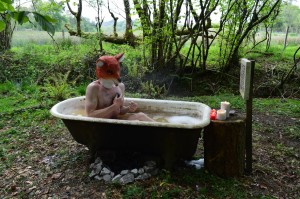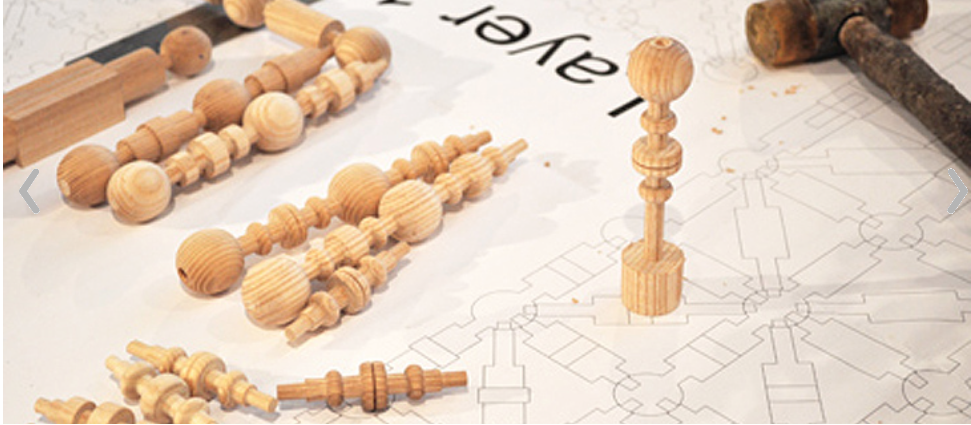Bevis Fenner
14 June 2016
The June session of the Phenomenology and Imagination Research Group took our previously explored idea of conversation as methodology on a slight detour. To be precise, that detour took the group to West Dorset via my narrative retelling of a recent four week residency as part of Anna Best’s Mothership Residencies project. I used the session to open up the notion of conversation to the possibilities of collaboration both with humans and non-humans. Drawing upon Deleuze and Guattari’s ideas of affects and becoming, and Karen Barad’s explorations of human and non-human agents, I set out to start a conversation about the nature of conversation and collaboration in the art-site relations of the artist’s residency. The reading I sent the group prior to the session was a chapter on residency and collaboration from For Creative Geographies (2014) by Harriet Hawkins – an exploration of the human interactions and encounters that residencies can produce, as well as the ways in which material making and skill-sharing can build community and transform individual and collective subjectivities. Here, person-site relations become part of an affective praxis in opposition to alienating and dehumanising effects of neoliberalism – individualism, competitiveness, exchangism, deskilling, social atomisation and so on. Hawkins stresses the importance of shared labour – literally collaboration – in transforming individual and collective consciousness. She uses gardening – a key aspect of my residency – as an example of a ‘grounded’ practice that has the power to disrupt and reconfigure the habitual relations of everyday life:
“We could suggest that the physical, discursive, and haptic experiences of shared labour… was part of the creation of a rupture in everyday practices from within which new identities and shared consciousness could emerge (Hawkins, 2014: 170)”.
The starting point for the group’s conversation was a discussion of the unique labour relations of the residency, which as I admitted to the group, were an initial source of suspicion as I adopted the cynical post-human perspective of trying to analyse the power relations between host and guest and the exact terms of labour exchange. However, in attempting to calculate and quantify these relations, I found that rather than reflecting the neoliberal idea that altruistic acts are often thinly veiled opportunism and that everyone is ultimately self-serving, the residency provoked a sense that the reciprocal nature of the collaboration had far more humane dimensions. It seemed that the more I tried to quantify the exchange, particularly in relation to labour value because I was not paying money to be there, the more the things shattered to reveal human truths and a qualitative value way beyond any kind of contractual arrangement. Thus my attempts to provoke a breakdown of assumed neoliberal labour relations were unjustified as the layers fell away to reveal a very human conversation about not only the need for people to live together but also the importance of bringing things together that are usually held apart. Instead of finding an illusionary micro-utopia sustained by wealth and privilege, which masked true power and property relations, I found a situation of honesty – a genuine attempt to make new worlds and recuperate old ones. Small-scale organic farming is an uphill struggle where the old binaries of humans pitted against nature are initially reinforced. However, in responsible and ethical engagement with complex ecosystems, culture / nature binaries are eroded. Pestilence ceases to become a non-human enemy to be wiped out with petrochemicals when ecosystems are in balance. The context for the residency was not only thought-provoking but also provided a space for dialogue between humans and non-humans alike – “a potential space for collaborative thinking”, as Noriko put it. One of the key things that came out of the session was the notion of ‘maternal space’ – of how, out of necessity, things of difference are brought together. Instead of seeing disruptions as inconveniences that break our ‘trains of thought’, by being open to ‘external’ factors and intrusions we are able to open out to new and emergent ways of being and seeing that foster generative creative processes. My challenge was to move beyond provocation as a means of ‘exploding’ power and property relations, and to embrace collaborative conversation as a means of gently unpicking the complexities of context without ignoring tensions and differences. In the words of Harriet Hawkins (2014), to develop truly collaborative art-site relations we must ‘remain open to the generative complexities of a given site… to be able to recognise the problematics of context, without sacrificing the ability to work productively within the community…’ (Hawkins, 2014: 166).
Hawkins, H. (2014). For Creative Geographies: Geography, Visual Arts and the Making of Worlds. London: Routledge.


